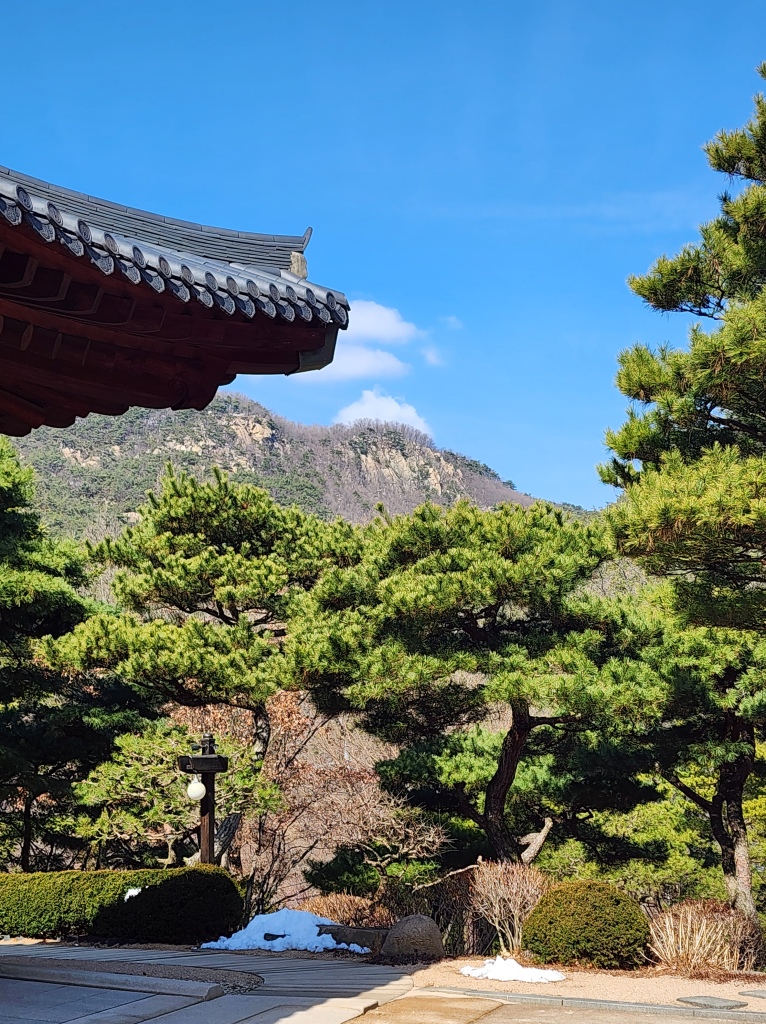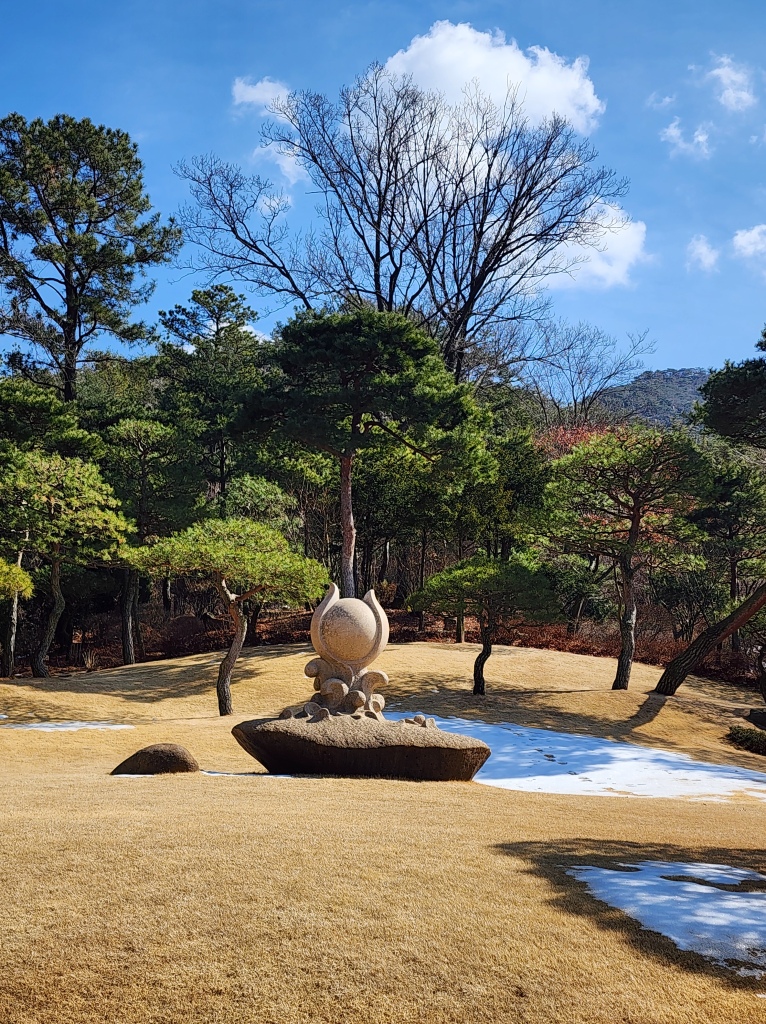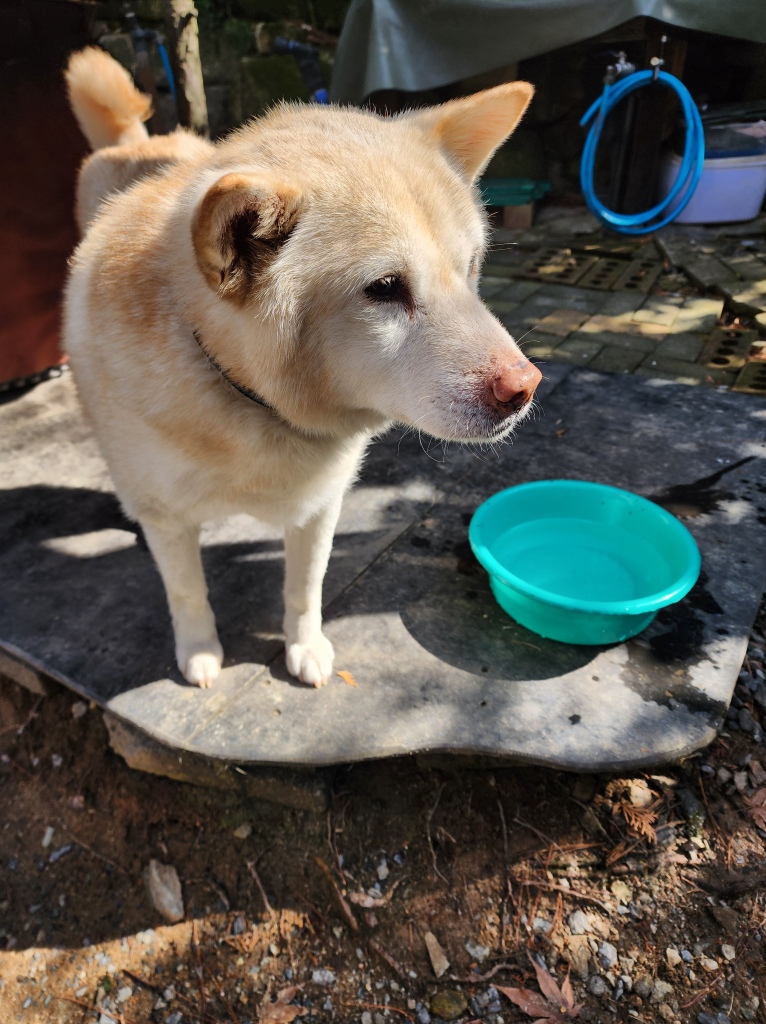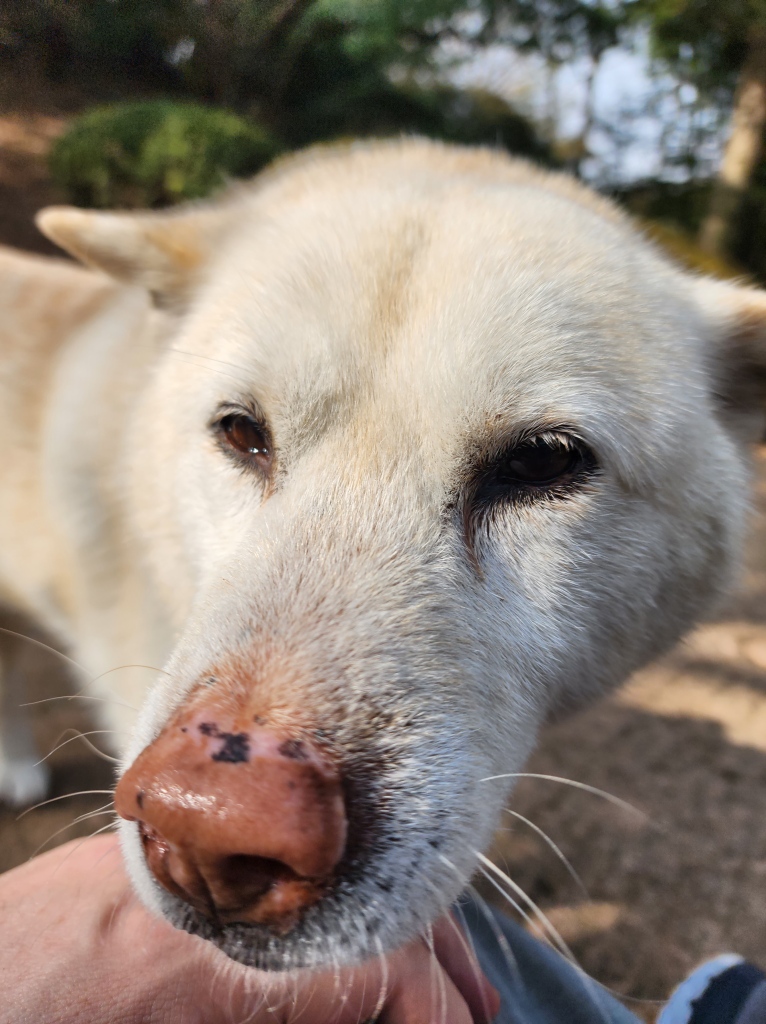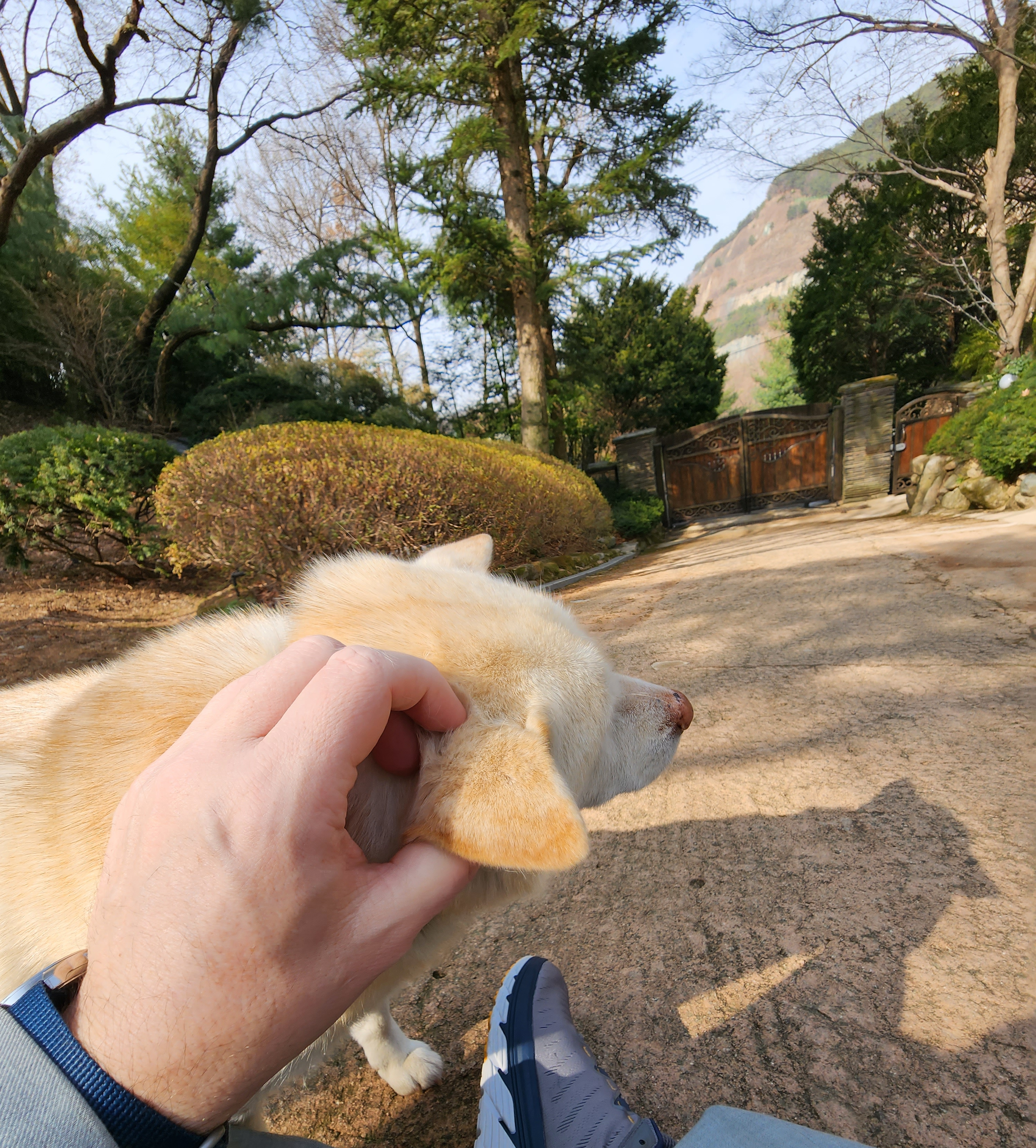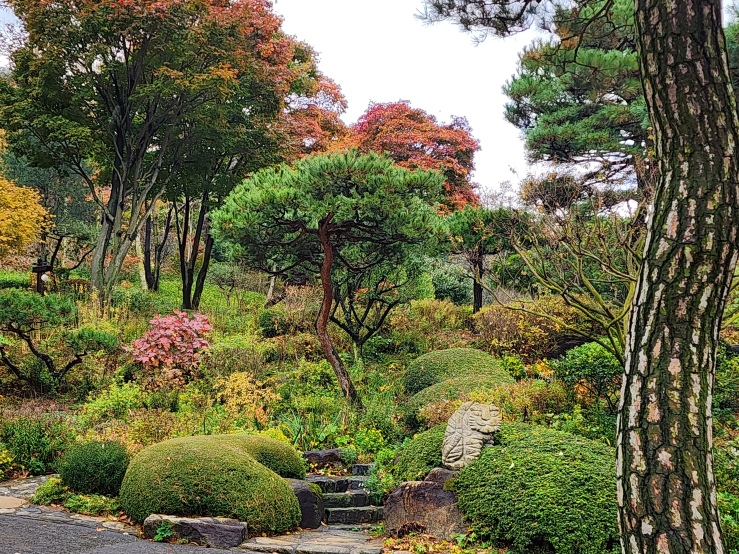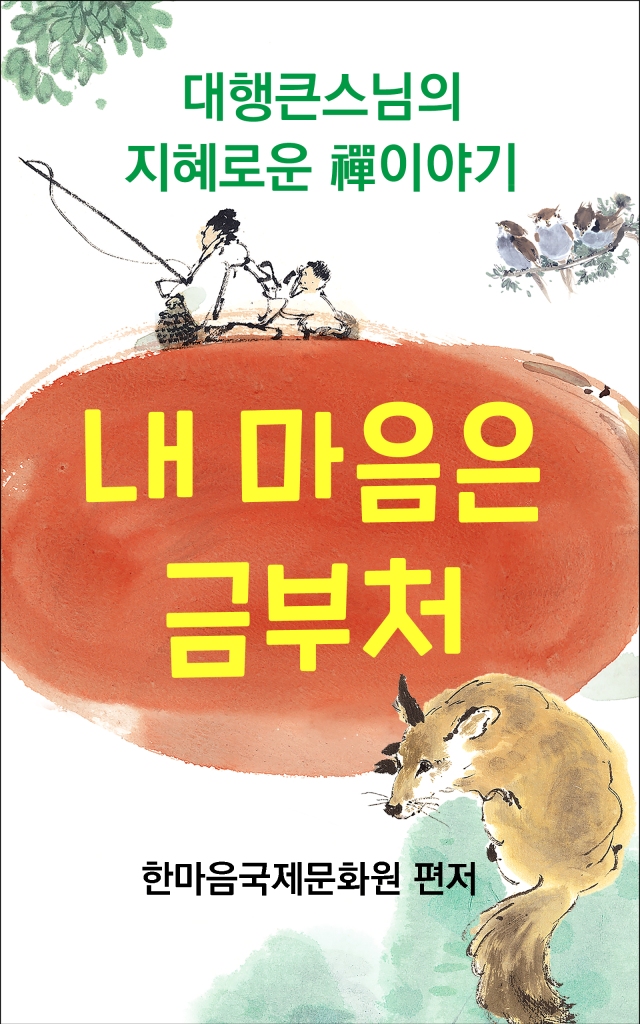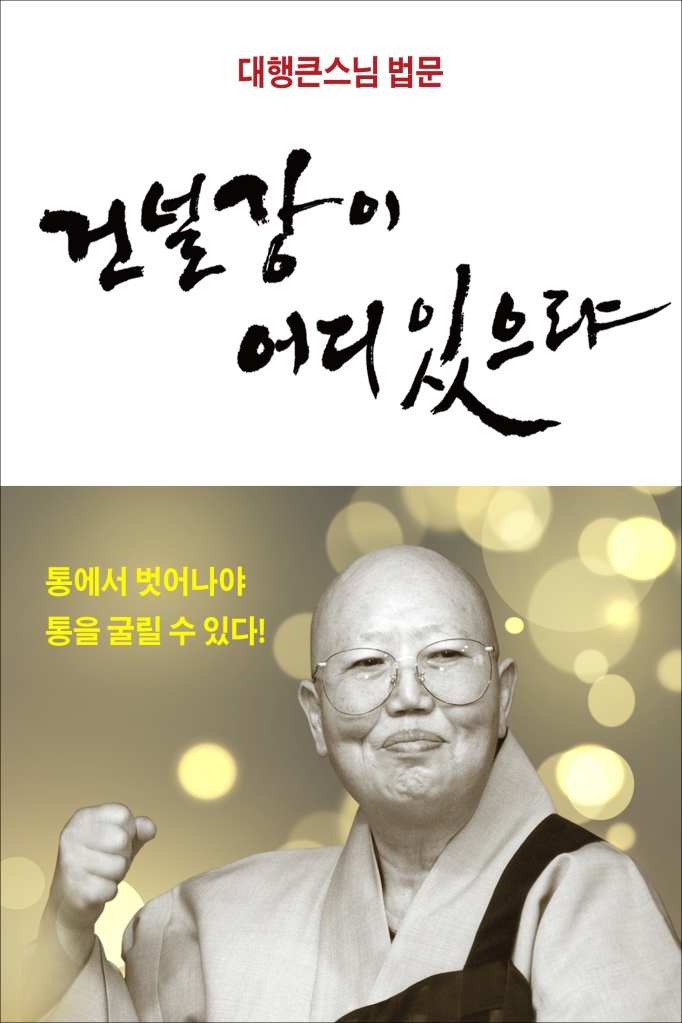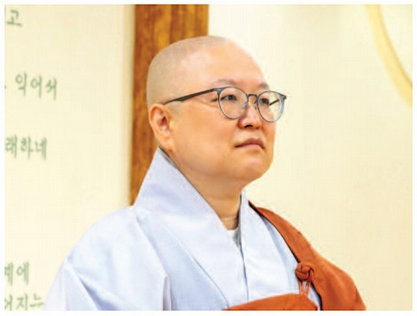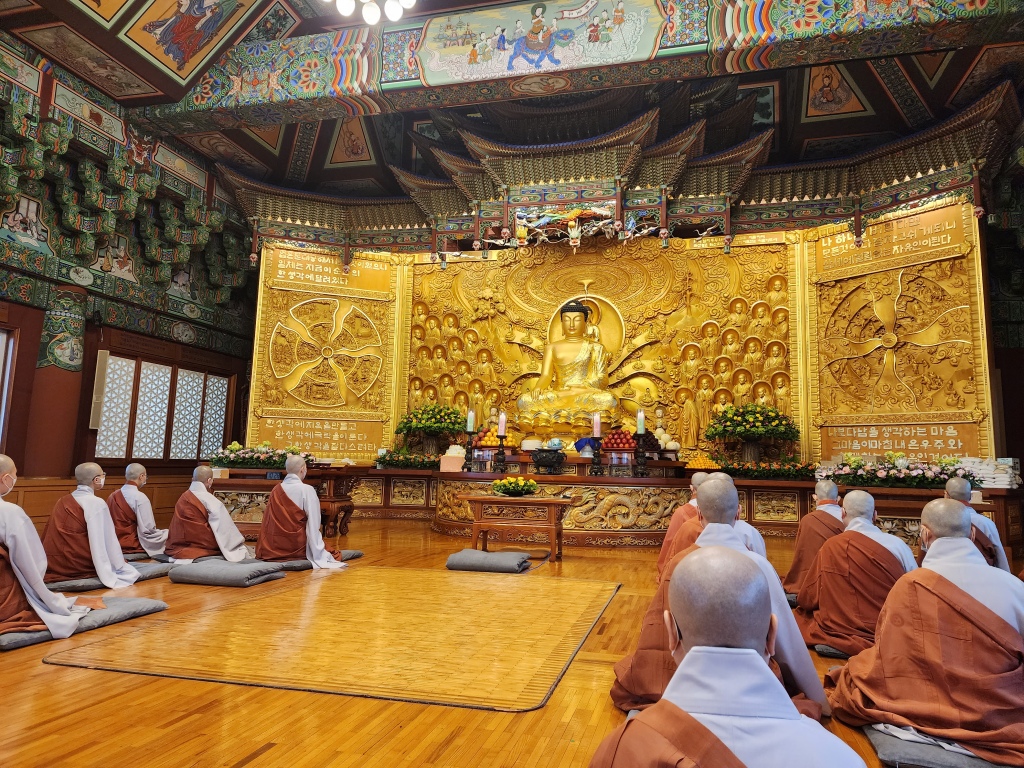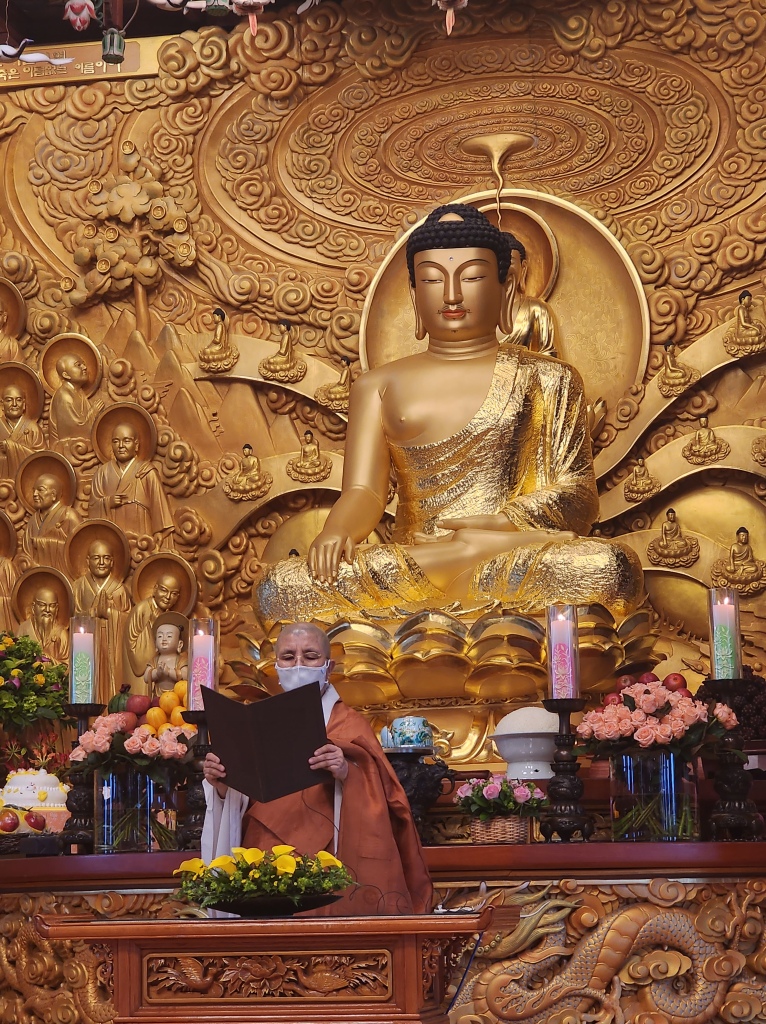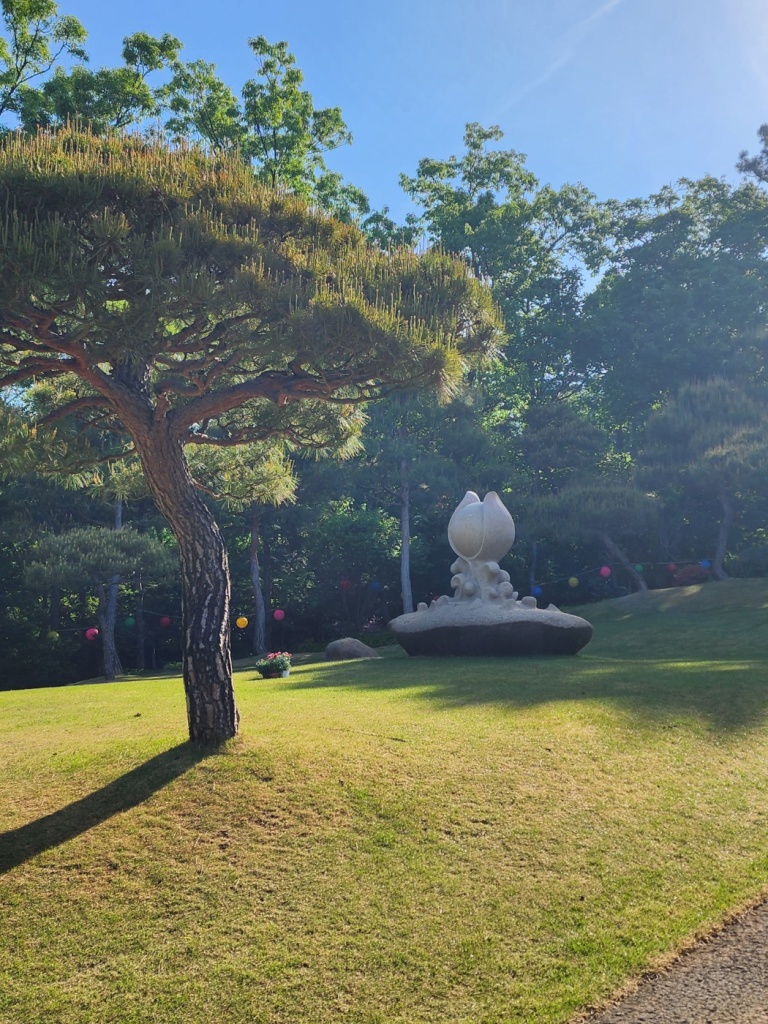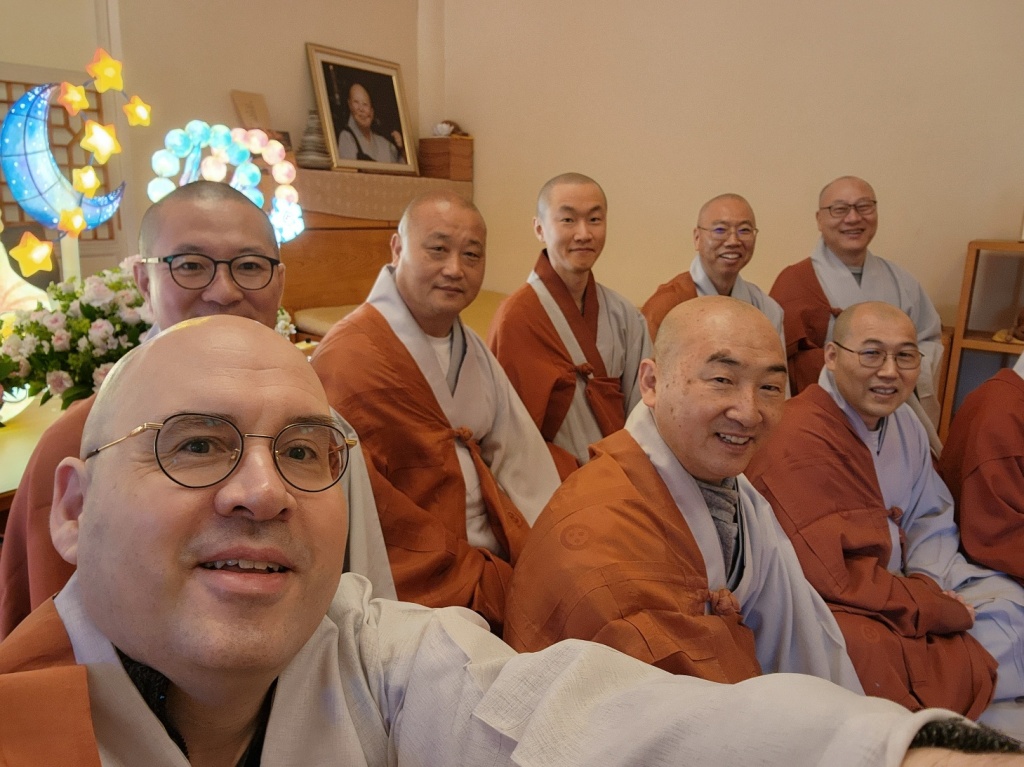Hye Gak Sunim completed the traditional sutra study hall, before going to Dongguk University and finishing the coursework for a Ph.D. in English translation. She currently works with the Hanmaum International Culture Institute at Anyang, as well as the Seon Center’s Document and Reference department. This interview originally appeared in Korean in the Jan/Feb 2015 (#79) issue of Hanmaum Journal.
Getting our present consciousness to follow our foundation
My life was about as ordinary as it gets. There was no great drama or tragedy. As a child, I followed my mother to the local temple, and in high school I belonged to the Buddhist students club. After graduating from college, I encountered the Daegu branch of Hanmaum Seon Center, and three years later, I became a sunim. All in all, it’s a fairly ordinary story.
When I think back on how constantly I participated in my high school’s Buddhist group, I can’t help but wonder about some sort of a past life connection. In those days, I didn’t particularly know anything about Buddhism, nor was I in awe of the sunims I’d met, but nonetheless, I never missed a meeting. For some reason, the atmosphere at the local temple felt very comfortable to me.
It was a friend from college who first led me to the Daegu Hanmaum Seon Center. That was about 1995, and the Seon Center was in an ordinary building. They did things a bit differently from the traditional temples I was used to, so I was a little doubtful about just what kind of a place I’d come to. But when it was time for the Dharma talk and they showed a video of one of Daehaeng Kun Sunim’s dharma talks, I was so moved.
I’m not a particularly emotional person, but as I listened to Kun Sunim speak, I cried and cried. I didn’t know anything about spiritual practice, but her words were what my foundation had been longing for. It was like my foundation had used the karmic affinity from my past life to lead me to Kun Sunim, even though my present consciousness had no idea what was going on.
After that, going to the Seon Center was a natural part of my life. I went to the youth group Dharma talk every Wednesday, and eventually became the vice president of the group. I taught the younger groups, and every summer and winter, I went on retreats with the other students during the vacation. Although I was a “teacher,” there was definitely a limit to what I understood! I just tried to do my best with the different roles that came to me.
I never had any real doubts about Kun Sunim’s teachings. I tried to focus inwardly, and if the situation was a bit urgent, I tried entrusting that, and things seemed to work out pretty good. For example, at one of the big Dharma talks Kun Sunim gave in the summer, it was extremely hot. The air conditioning couldn’t keep up, and everyone was busily fanning themselves. I entrusted the thought, “Juingong, it’s you that doing this, and it’s also you that can keep me cool, right?”
I entrusted that thought, and then forgot about it. But a few moments later, I started to feel a lot cooler. My first thought was, “Ah, they’ve turned up the air conditioning!” But then as I looked around me, I realized that everyone else was still sweating and fanning themselves. I think that this was my foundation showing me how the thoughts we give rise to can affect anything. At that time, I expected everything to change according to the thoughts I gave rise to and entrusted, but when things didn’t go well, I just let go of that too, without getting too bothered about them.
Later, as well, there was a habit that I really wanted to overcome, and so I worked diligently at entrusting it to my foundation in order to dissolve it. One night I had a dream where a grandfatherly old man appeared. He had long white hair, and was squeezing a lot of black gunk out of my body! I was so surprised, “Is all that really inside me?” and then woke up. When I reflected upon myself, that habit was gone. I still work with habits like this; there seems to be no end to the habits I created over the course of evolving to this point.
Sincerely entrusting my future
I’d been coming to the Seon Center for about two years, when the sunim in charge of the youth group suggested I consider the possibility of becoming a sunim. I had never even considered it before. Even when I told a friend that studying and practicing at the temple was everything to me, and they asked why I didn’t become a sunim, I completely dismissed the idea, saying “That’s not my path.” So when the youth group sunim suggested becoming a sunim, that was the first time I ever seriously looked at the possibility of becoming a sunim.
In those days, I was often quite moved by Kun Sunim’s Dharma talks. I’d be swept away by emotions just reading one of her talks. One day, my foundation showed up in my dream, and in the dream, I realized that it had been waiting for me to finally have faith in it and entrust it with the stuff of my daily life. It also felt like my foundation had been somewhere nearby, wailing, as it waited for me to connect with it. The next morning I was feeling bad, and made up my mind to practice harder. And about a year later I left to become a sunim.
After I entered the temple, it was about two weeks before they cut my hair. The abbess took me to see Kun Sunim. That was the very first time I’d ever met Kun Sunim in a one-on-one setting. She asked me how long I’d been at the temple, so I told her, and she asked why I’d waited so long to get my hair cut. The Abbess explained that I’d taken a couple of weeks because of my father, who was very traditional and opposed to women going out on their own, and had been coming to the temple to try to talk me out of becoming a sunim.
Kun Sunim replied that I was the most loyal of children. And then she cut three snips of my hair. (Kun Sunim was implying that by becoming a sunim and learning more about her fundamental mind and how to apply it, Hye Gak Sunim was the greatest position to truly help her parents. – Translator)
We went back to our own bathroom, and the other sunims helped us fully shave off our hair, and then went back to greet Kun Sunim.
Kun Sunim asked me, “When water flows, where does it go?
“To the ocean,” I answered.
“Exactly. When it becomes the ocean, it then transforms into clouds, and returns to the earth, feeding every kind of life. Big things drink big amounts, and small things drink small amounts, according to their capacity, and even though they are all sustained, there is plenty remaining.”
“You have to study English”
I didn’t have any real problems with life as a sunim, although it was quite different than the vague impressions of it that I’d had. In part, I was used to living with my rather strict father, but I also seemed to just accept that this was what life is like in a temple, and got on with things. After my time as a postulant, I worked at the Seon Center for several years, and then started a four year program at a sutra study hall in order to receive full ordination.
During one of the breaks in the school year, we greeted Kun Sunim, and she said to me, “If your English isn’t up to speed, you should study further. If you’re going to be able to handle your future roles, you’ll need to go to graduate school. If possible, you should go to Dongguk University’s program.”
Inwardly, I was a dubious, because Dongguk was known for their regular English Literature program. It didn’t seem like the place to learn to kind of English that would be necessary at the Seon Center, or the verbal translation skills she implied I’d need.
Without me actually saying anything, Kun Sunim said, “If there’s another program that you think would be better, you can go to that instead. You’re the one who has to ensure that you grow in capacity. So think carefully about what you need. This is going to be your (all of the sunims) temple, as well as your problems, so every last thing will be up to you to take care of, and it will be up to you all to teach newcomers. All of that, and those problems, will be yours.”
I took this very, very seriously. One of my jobs after becoming a sunim was to help Kun Sunim’s assistant, so I’d spent a fair amount of time around Kun Sunim, and knew she didn’t say things like this very often. So, I thought very carefully about what she said, reflecting on it from time to time, and in what little spare time I had at the sutra study hall, I studied English.
My college major had been English Literature, so I often found myself translating for foreigners when they visited the Seon Center. I think this might be why Kun Sunim singled me out to study English further.
It turned out that by the time I finished the four year sutra study course, Dongguk University had begun a master’s degree program in simultaneous translation, and it turned out to be an excellent program for what Kun Sunim wanted me to do. So I completed that course, and then went on to finish the coursework for a Ph.D. in their English Literature program with a focus on translation.
Because of this preparation, I was able to join the team at the Hanmaum International Culture Institute, and even help introduce Kun Sunim’s teachings to foreigners at the Frankfurt Book Fair.
In October 2014, I went to the Frankfurt Book Fair as part of my work with the Hanmaum International Culture Institute, and I was so impressed with how diligently the members of the German branch approached everything, and I really wanted to reach out to them. As practitioners, we have to firmly grasp our foundation, and learn to rely upon it, and then share with others how to do this. Both aspects are so important, and if we are going to do this, then we need language skills. This is why Kun Sunim was always encouraging us sunims to study foreign languages.
When I was at the Book Fair, a lady came up to me and started speaking in a language I’d never heard before. It wasn’t English, and I had no idea what she was saying. It suddenly reminded me of something Kun Sunim had said, “When you thoroughly understand English, go ahead and learn one more language.” Seeing so many people from around the world, I couldn’t help thinking how wonderful it would be if I could communicate with all of them!
All over the world, there are people waiting for a chance to learn about spiritual practice and our inherent connection. There are so many good teachings that could really help them, but that good information is closed off to them because of language. Isn’t this a terrible thing? Even in other countries, there are people who studied and practiced relying upon this fundamental mind, and who need to encounter these teachings. They would have such an impact on the lives of such people!
Not too long ago, SBS had a documentary about members of our German branch, the Epple family, and how they have been working at spiritual practice. When people from other countries are interested in and practice teachings from Korea, it tends to inspire other Koreans to become interested in those teachings as well. So, helping foreigners learn about this practice benefits Koreans as well.
Working on Behalf of the Whole
Looking back, I see just how thoughtful and considerate Kun Sunim was. Many of the sunims have stories that we’ve shared among ourselves of times when we were taking care of some ordinary chore, when unexpectedly Kun Sunim would show up and say or do something. It felt like she had deeply examined us, and then addressed some aspect that we really needed to know.
One time, I had sprained a finger, and was entrusting the thought, “Juingong, take care of this so that it doesn’t hurt,” and it wasn’t hurting that much. But whenever I did laundry, it really bothered me. About three days later, I was doing something in Kun Sunim’s room, when she reached out to me and grasped my sprained finger. She quietly held it for about three minutes, and then let go of it. Before I could think of anything to say, a sunim called me from the kitchen to help move a large, heavy pot. She needed me to move it to the basement storeroom, so I picked up the pot, and after two or three steps, a loud popping sound came from my sprained finger, and I could bend it normally again, without any pain at all.
I was aware that Kun Sunim was always looking out for us, but after this I could really feel the affection she had for all of us as she paid attention to even tiny things like my fingers. Even though I didn’t speak about what I might be going through, she already knew. Even when I couldn’t sense it, she was still there, guiding me. And when I stood in front of her, it was like everything about me was completely revealed. She saw everything, exactly as I am. She was that much of a true teacher.
One time, I had been speaking with Kun Sunim about an upcoming performance of Dharma songs, and told her that we had obtained the use of the Sejong Cultural Center in Seoul, which is one of the best performance halls in Korea. She asked me, “What kind of place is that?”
So I gave her the details about the hall, saying that it was the largest concert hall in Korea, it could hold over 3,000 people, and that it had the best acoustics and sound system of anyplace. Our choir was going to be giving three performances, and we expected nearly 10,000 people to attend.
The thing was, our choir had performed there before, so this was all information that Kun Sunim already knew. But she asked, so I gave as detailed an answer as I could. But then she asked me again, “What kind of place is that?”
She asked me this three times, and each time I gave as detailed an answer as I could. Finally, she said, “In the future you (the sunims) will be people who can go forward on a great stage.”
Whether You Live or Die, Believe in Your Foundation
One difference I’ve discovered between sunims and lay people is that no matter how serious the situation is, sunims tend to think of it in terms of only practice. That’s how they look at things. Whereas with lay people, some of them are more likely to start looking around for something else if their practice doesn’t immediately show the results they want. They’ll practice diligently for a while, and then look for something else. This isn’t everyone, of course, but it is more common with laypeople. On the other hand are the people who will keep coming back to their foundation, even until the end of their days.
The most important element in solving what confronts us is whether or not we can truly entrust that. Even when faced with life and death, can we entrust that? Even with things that seem small, small doesn’t mean insignificant. Again, can we completely let go of it? Can we unconditionally let go of it? Can we let go of everything, even our life? This letting go and entrusting is what really counts.
This is such a precious teaching. Anyone can learn it and through it, gain all kinds of deep experiences. Through those, they can save not on their own life, but also the entire planet.
We all know what we need to do for spiritual practice, so now we need to put that into practice and rely upon our foundation, regardless of what we encounter, regardless of what we go through, and regardless of even if we are about to die.
One night when I was helping take care of Kun Sunim, she said to us, “I’m going to return to higher realms. Will you follow me?”
I wish I could have, but I knew I wasn’t advanced enough to be able to follow her.
We all have to develop our ability to interact with our foundation to the point where we can freely move like this. I hope that everyone develops this kind of practice, and so experiences the deep faith in their foundation that arises from this.









